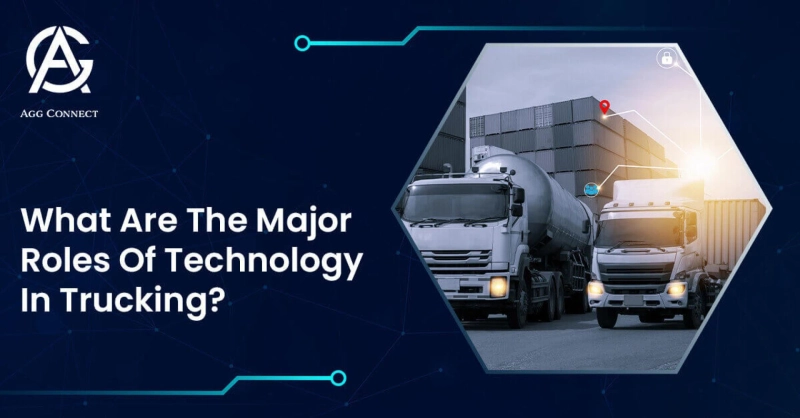The trucking industry is one of the largest and most important in the United States. It directly employs over 4 million people and indirectly supports many other businesses that supply goods and services to truck drivers, such as hotels, gas stations, and fast food restaurants. The demand for truck drivers is expected to increase by up to 27% by the year 2026 due to a shortage of qualified drivers. Even though the need for qualified truck drivers is increasing, so are the number of accidents involving trucks. This has led some experts to wonder whether technology may be playing a role in these accidents. For instance, could GPS technology used by trucks make it easier for them to crash into another vehicle? What about Autonomous Technology? Are there any downsides or risks related to this technology? In this article we’ll answer all your questions about technology in general and its specific roles within the industry:
What is Technology?
Technology is the systems and machines used by people to make their lives easier. For example, you might use a computer to research information, send an email to a friend, or use a word processor to write a paper. You might also use a calculator to add or subtract large numbers. Technology also includes machines such as refrigerators, microwaves, and air conditioners that help us with our daily lives. Technology is a broad term that includes many different tools and machines. It is important to note that the trucking industry uses technology in two ways: to make driving easier for truck drivers and to make the roads safer for everyone.
Electronic Logging Device (ELD)
An Electronic Logging Device (ELD) is a smart device that automatically tracks the exact location, speed, and hours of operation of a commercial motor vehicle. This ELD automatically records data for every trip made by the truck, including breaks and times when the vehicle is parked. In the past, truck drivers had to keep a paper log of their activities. This meant manually writing down the start and stop times of each trip, as well as any breaks they took. The EEL has greatly simplified the process. With this technology, drivers can be confident that they will not be issued a citation for driving too many hours or not taking the proper breaks. The ELD also allows shippers and trucking companies to monitor the location of the truck and confirm that it is making progress.
Automatic Identification System (AIS)
The Automatic Identification System (AIS) is a network of marine VHF radio stations that automatically broadcasts the location of all boats at sea. AIS uses a digital system to broadcast information that includes the boat’s name, length, type of vessel, and location. This helps prevent collisions and assists search and rescue operations in the event of an emergency. AIS works in two ways: It enables the system’s operator to transmit information about a boat and it allows anyone in the area to receive that information. AIS is the most efficient way to monitor vessels, given the large number of boats and ships on the water. The system works 24 hours a day, 7 days a week, and provides the following information: The name of the boat The length of the boat The type of boat The position of the boat (longitude and latitude)
Autonomous Technology
Autonomous Technology is a system that uses sensors to navigate and drive a vehicle without human intervention. In the trucking industry, autonomous vehicles are still in the testing phase, but many experts expect them to be adopted in the near future. Some of these autonomous vehicles are already being used in mining operations and for military transport. There are several types of autonomous technology being tested for trucks. Some of these include: Lane-Keeping systems: These technologies use sensors and cameras to identify lane markings and keep the truck in its lane. Automatic braking: This technology uses sensors and cameras to identify obstacles in the path of the truck and warn the driver. Then, if the driver does not respond, it applies the brakes. Advanced Guidance Systems: These systems combine various sensors and computer systems in order to pilot and guide the truck.
GPS Tracking and Navigation System
A GPS (Global Positioning System) tracking system allows you to follow the exact location of a vehicle or asset, such as a truck. The system combines satellite signals with specific time data to determine the location of a specific device. It can easily track the speed and direction of the vehicle and display this data on a user-friendly map. A navigation system is a type of navigation device that is usually found in cars. These devices are designed to provide directions to a particular destination based on the current location of the vehicle. They can also be used in trucks. A navigation system can help a truck driver to avoid traffic delays and back-ups. It can also help the driver to find the best route to a destination. Some systems allow the truck driver to input special instructions, such as low bridge alerts, which alert the driver about nearby low-clearance bridges.
Summary
The trucking industry relies heavily on technology to make its operations more efficient. This includes everything from electronic logging devices to advanced guidance systems. Technology also plays a crucial role in ensuring the safety of both drivers and pedestrians on the road. As we have seen, there are many ways in which technology can be used to make the trucking industry more efficient. However, it is important to note that not all types of technology are equally safe. It is important to remember to use the right technology in the right way.
0


